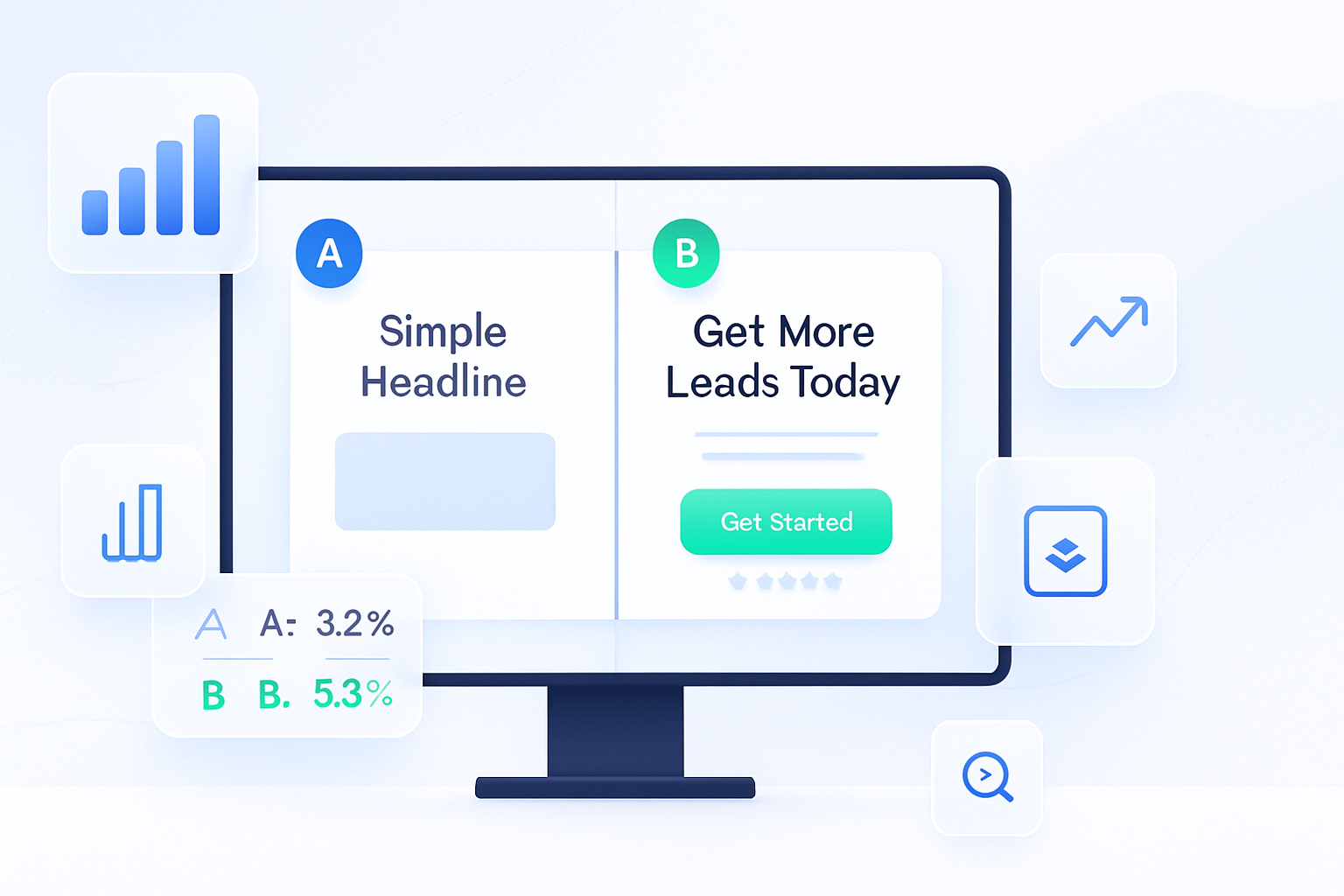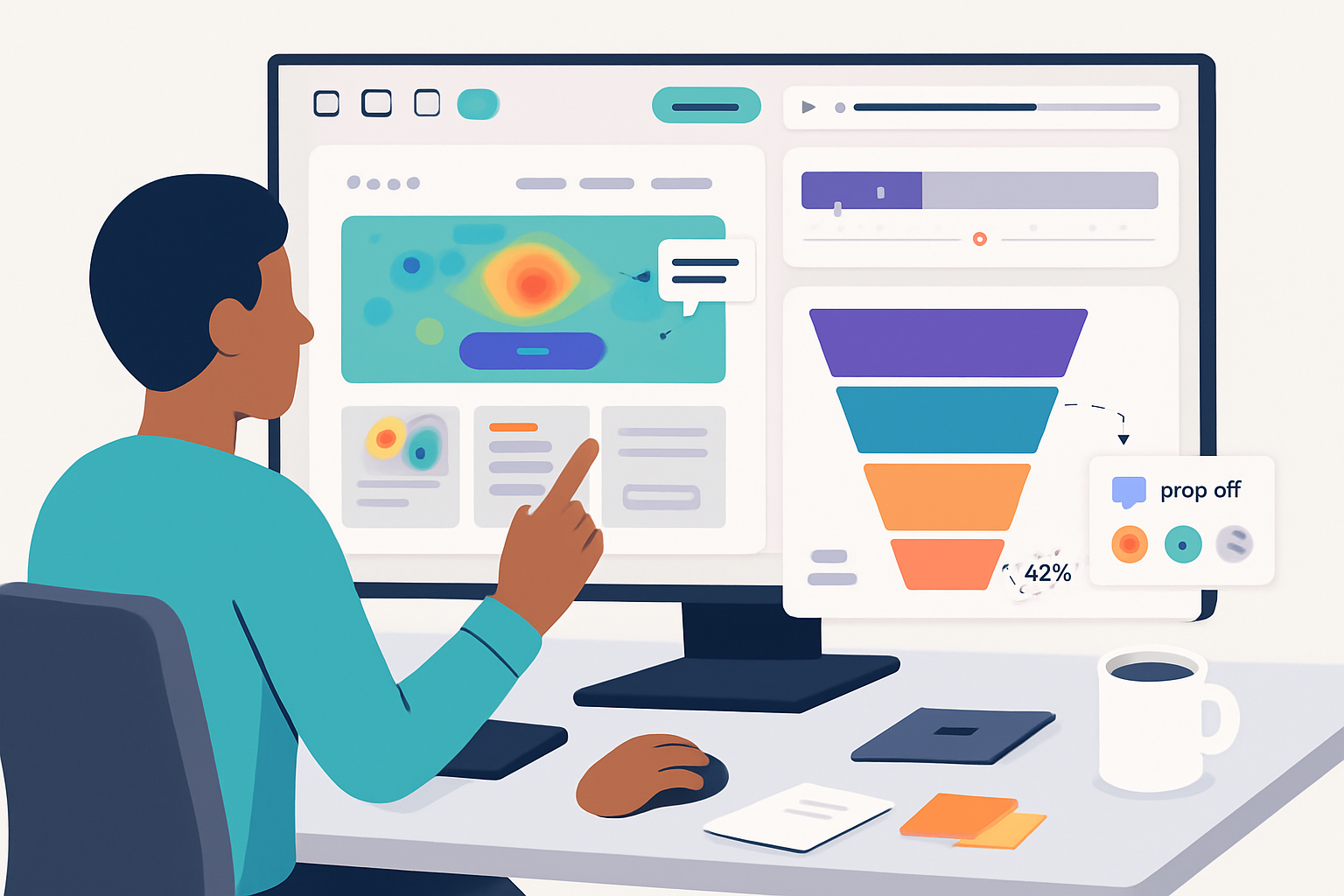· marketing · 6 min read
Mastering Instapage: 10 Tips Every Marketer Should Know
Unlock Instapage's advanced capabilities with 10 practical, expert tips - from personalization and Dynamic Text Replacement to A/B testing, page speed, analytics, and integrations - to create high-converting landing pages and streamline your post-click experience.

Why Instapage? A quick orientation
Instapage is built for post-click optimization: a drag-and-drop page builder, dedicated templates, built-in analytics and heatmaps, A/B testing, personalization, and many integrations that let you turn traffic into conversions faster. This article skips the basics and dives into 10 actionable tips that will immediately improve your Instapage workflow and results.
Useful reference links:
- Instapage Help & Docs: https://instapage.com/help
- Instapage Features Overview: https://instapage.com/features
- Landing page best practices (HubSpot): https://blog.hubspot.com/marketing/landing-page-best-practices
- Landing page insights & testing (Unbounce): https://unbounce.com/landing-page-articles/
- A/B test sample size calculator (Evan Miller): https://www.evanmiller.org/ab-testing/sample-size.html
Tip 1 - Start with a conversion-focused template, then make it yours
Instapage includes many high-performing templates. Use them as a structural starting point (layout, visual hierarchy, spacing), not a finished product.
- Choose a template that matches your page objective - lead gen, demo request, sale, content download.
- Replace generic copy and imagery immediately - a template’s default assets rarely match your offer or audience.
- Keep the structure that works (headline → hero CTA → social proof → benefits → form/CTA), but adapt microcopy and visuals to reflect your value proposition.
Why: Templates speed you up and preserve established UX patterns. Customization tunes the template for relevance and trust.
Tip 2 - Use Dynamic Text Replacement (DTR) to increase relevance
Personalization drives higher CTRs and conversion rates. Instapage’s Dynamic Text Replacement lets you swap in query-string values (like keywords or ad copy) into headlines or CTAs so the page mirrors the visitor’s search or ad.
How to use it:
- In your Instapage editor, select the text element you want to personalize.
- Look for Dynamic Text (or similar) in the settings.
- Map it to a URL parameter (e.g., utm_term, keyword, product).
- Make sure your ad or traffic source appends that parameter (e.g., ?utm_term=blue+widgets).
Example: If a user clicks an ad for “enterprise analytics,” the headline can become: “Try enterprise analytics built for speed.” That immediate relevance lifts conversions.
Reference: Instapage docs on personalization and dynamic content: https://instapage.com/help
Tip 3 - Leverage Global Blocks & Saved Sections for brand consistency
Create reusable Global Blocks (headers, footers, forms, testimonials) so updates ripple across multiple pages.
Benefits:
- Fast updates when policies or creative change.
- Consistent UX and messaging across campaigns.
- Reduce design debt and QA time.
Pro tip: Build a library of form blocks with different field sets: short lead form, demo-request form, newsletter signup. That makes testing form length and friction simple.
Tip 4 - Run disciplined A/B tests (and test one variable at a time)
Instapage’s split-testing makes it easy to create variants - but discipline wins the experiment.
Best practices:
- Test a single variable per experiment (headline, CTA color/text, hero image, form length).
- Calculate required sample size before you start (use an A/B test calculator like https://www.evanmiller.org/ab-testing/sample-size.html).
- Run tests long enough to reach statistical significance and account for weekday/weekend traffic patterns.
- Keep a testing log - hypothesis, date started, primary metric, result, next action.
Examples of winning tests: clearer benefit-driven headlines, fewer form fields, stronger visual proof near the CTA.
Tip 5 - Use heatmaps and session recordings to prioritize changes
Heatmaps identify where people click, scroll, or get stuck. Session recordings reveal confusion or friction during form filling.
How to apply:
- Start with heatmaps on the highest-traffic pages to see whether visitors reach your CTA.
- Use session recordings to watch problem flows (e.g., many visitors abandon after a scroll or hit a broken script).
- Prioritize fixes that affect the largest number of visitors or the biggest conversion blockers.
Instapage includes heatmap functionality; pair it with analytics (Google Analytics or your preferred tool) for full context.
Docs: Instapage analytics & heatmaps: https://instapage.com/help
Tip 6 - Optimize forms: reduce friction, add progressive capture
Forms are where conversions happen - and where many visitors drop off.
Practical form optimization tips:
- Start with the minimum fields needed. If you need more, use progressive capture across subsequent interactions.
- Label fields clearly and use inline validation to reduce errors.
- Consider conditional logic to show relevant fields only when needed.
- Offer social proof or a short privacy note near the form (e.g., “No spam. Unsubscribe anytime.”).
- Use thank-you pages to continue the journey and track conversions reliably.
Pro tip: Track form abandonment events via Google Tag Manager or Instapage’s native integrations to quantify the issue.
Tip 7 - Speed matters: optimize assets and scripts
Page speed is a conversion factor. Slow loading increases bounce rates and lowers ad quality scores.
Speed checklist for Instapage pages:
- Compress and resize images for web (WebP where appropriate).
- Combine and limit third-party scripts (chat widgets, tracking pixels) - load non-essential scripts after first render.
- Use optimized fonts - choose web-safe or preload critical fonts.
- Avoid heavy background videos on mobile.
- Test page load with tools like Google PageSpeed Insights and address high-impact recommendations.
Faster pages = better UX + better campaign ROI.
Tip 8 - Connect the right integrations and automate follow-up
Instapage integrates with CRMs, email platforms, Zapier, and webhooks. A smooth handoff from landing page to sales/email automation is essential.
Integration workflow tips:
- Send leads immediately to CRM (with source metadata) so sales can act fast.
- Add UTM/source data to lead records to attribute performance accurately.
- Trigger automated, personalized email sequences from new leads (immediate confirmation + value-add content).
- Use webhooks for custom workflows (e.g., trigger internal Slack alerts for high-value leads).
Verify mapping fields and run end-to-end tests to ensure no data loss.
Instapage integrations: https://instapage.com/features
Tip 9 - Personalize beyond dynamic text: target by audience and ads
Instapage supports post-click personalization and segmentation. Use audience signals to tailor offers.
Segmentation ideas:
- Traffic source (Google Ads vs. LinkedIn) - match creative tone and offer.
- Geo-targeting - adjust currency, local references, or shipping options.
- Returning visitors - highlight product benefits for users who’ve seen your site before.
Combining personalized ad creative + matching landing page reduces cognitive friction and increases perceived relevance.
Tip 10 - Set up robust analytics & attribution (don’t rely on one metric)
One-click conversions are great, but full-funnel insight is what fuels scaling.
Measurement checklist:
- Track page views, form submissions, event interactions (CTA clicks, video plays) in Google Analytics or your analytics tool.
- Use UTM parameters on all campaigns so you can attribute performance by campaign, medium, and keyword.
- Cross-check Instapage conversion data with your CRM and ad platforms to detect tracking gaps.
- Consider multi-touch attribution if you run complex funnels across channels.
A well-measured funnel lets you invest confidently in the highest-performing channels and creative.
Quick technical checklist to copy-paste
- Use a template as the frame; replace copy + imagery.
- Implement Dynamic Text Replacement for ad-to-page relevance.
- Save and use Global Blocks for branding and forms.
- Run A/B tests, one variable at a time; calculate sample size.
- Review heatmaps before guessing design changes.
- Minimize form fields and enable inline validation.
- Compress images, limit third-party scripts, preload critical fonts.
- Integrate CRM/email and pass UTM metadata.
- Personalize by source, geo, and returning visitors.
- Track events, reconcile data across tools, and attribute properly.
Final thoughts: experiment fast, measure rigorously, personalize thoughtfully
Instapage gives marketers the tools to get post-click experiences right - but the hard work is in strategy and execution. Use these 10 tips as a practical checklist: prioritize based on traffic and revenue impact, iterate quickly with disciplined testing, and never stop refining your personalization and measurement.
If you follow this approach, you’ll not only build prettier pages - you’ll build landing pages that consistently move the needle.



